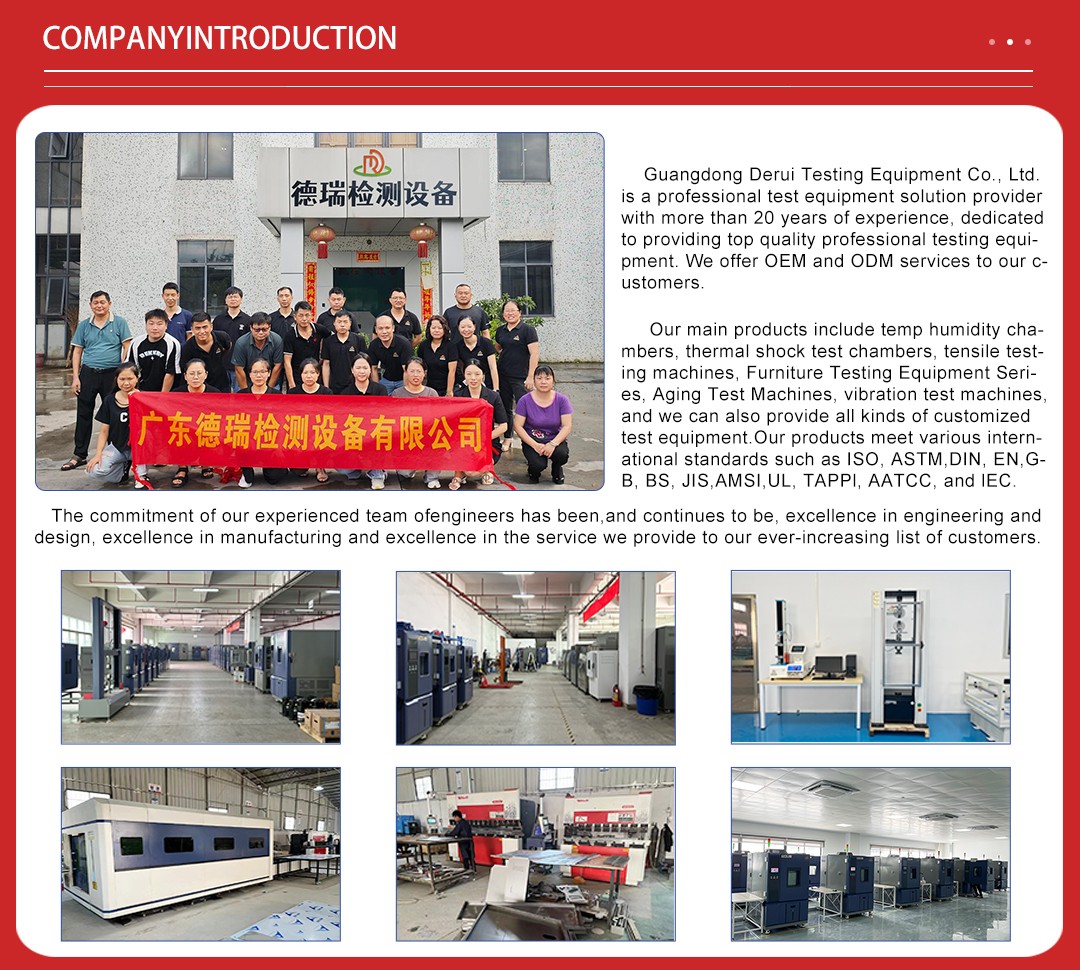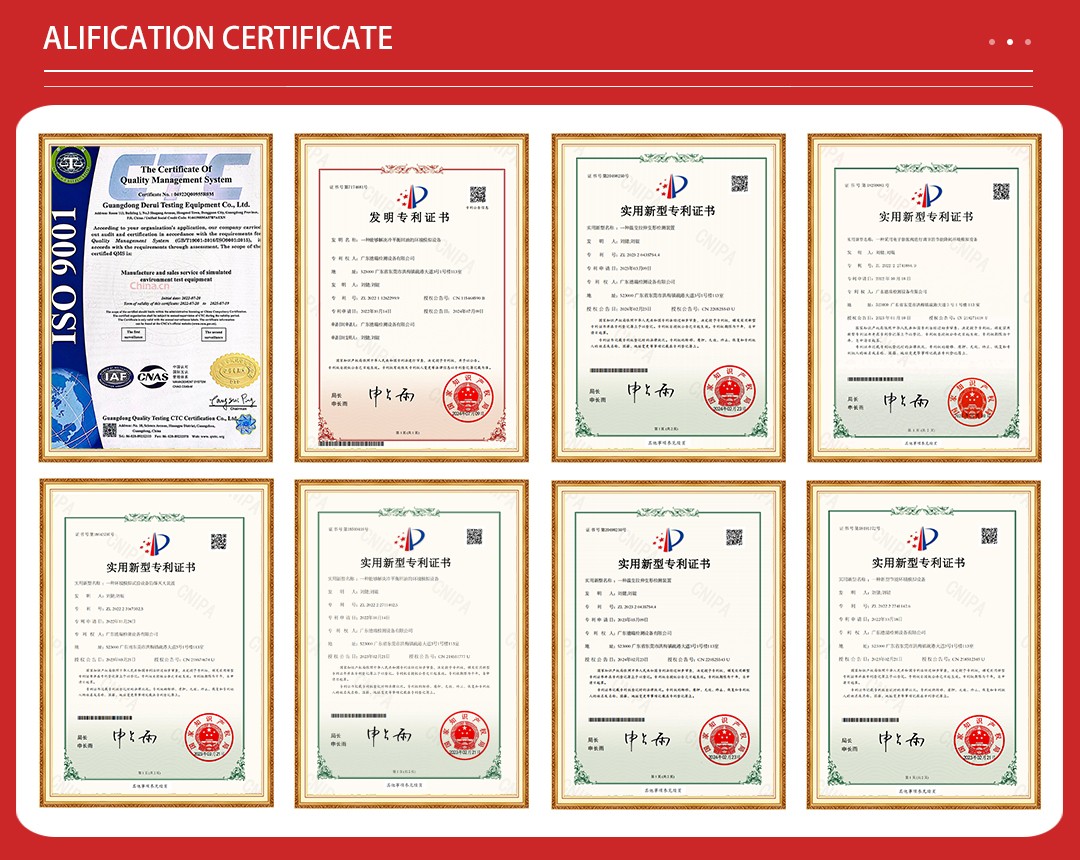
In the contemporary automotive industry, the rapid temperature change chamber, also known as the fast temperature variation test box, has emerged as a critical piece of equipment. Its applications span a wide range, including temperature resistance testing of automotive components, thermal fatigue testing of materials, and performance evaluation of entire vehicles under extreme temperature conditions. By simulating extreme temperature changes, the rapid temperature change chamber plays a pivotal role in assessing the reliability and durability of automotive components and vehicles under diverse climatic conditions.

The rapid temperature change chamber meets various international and domestic standards, ensuring the international recognition and reliability of test results. Some of the key standards include:
- ISO 16750: Road vehicles - Environmental conditions and testing for electrical and electronic equipment. This standard provides guidelines for the environmental testing of automotive electrical and electronic components.
- ASTM D4585: Standard Practice for Performing Cyclic Temperature-Humidity Testing of Automotive Components. This standard outlines the procedures for conducting temperature-humidity cycling tests on automotive components.
- GB/T 2423.1: Environmental testing for automotive components. This standard specifies the methods for environmental testing of automotive components, ensuring their performance and reliability under various conditions.

1. Rapid Temperature Change: The chamber can achieve swift temperature transitions, ranging from extremely low to extremely high temperatures, often at rates exceeding several tens of degrees per minute. This capability is crucial for simulating real-world temperature fluctuations that vehicles may encounter.
2. High Precision Control:Equipped with advanced temperature control systems, the chamber ensures that temperature changes are executed with unparalleled accuracy and stability. This precision is vital for obtaining reliable and reproducible test results.
3. Multifunctionality: Beyond temperature change testing, the chamber can integrate additional environmental simulation functions such as humidity control and vibration testing. This versatility allows for comprehensive evaluations of automotive components under a variety of conditions.
4. High Reliability: Designed with a compact structure and constructed from durable materials, the chamber is built to withstand long-term, high-intensity testing while maintaining stable operation.
5. User-Friendly Interface: Modern rapid temperature change chambers often feature intuitive control panels or advanced software interfaces. These interfaces enable users to easily set test parameters, monitor real-time data, and generate detailed reports.
6. Customizability: Many models offer customizable test profiles, allowing users to tailor temperature change patterns, humidity levels, and other environmental factors to specific testing requirements.

| Model | DR-H204-100 | DR-H204-150 | DR-H204-225 |
| Internal dimension | 400*500*500mm | 500*600*500mm | 600*750*500mm |
| External dimension | 750*1536*1310mm | 750*1636*1410mm | 850*1786*1410mm |
| Temperature(℃) | -20/-40/-70 | -20/-40/-70 | -20/-40/-70 |
| Maximum Current(A) | 22,22,28 | 22,22,28 | 18,18,23 |
| Voltage(V) | Single-phase220V | Single-phase220V | Three-phase380V |
| Temp,range | 0℃;-20℃;-40℃;-70℃~+150℃ |
| Test Method | Pneumatic Operated Door Switch(two/three-zone) |
| Temp.Display Accuracy | 0.01℃ |
| Temp.uniformity | ≤±2.0℃ |
| Temp.deviation | ±0.5℃~±0.2℃(without load) |
| Heating speed | 1℃/min~20℃/min,can be customized |
| Cooling Speed | 1℃/min~20℃/min,can be customized |
| Humid.range | 20%~98%RH |
| Humid.resolution | 0.1% R.H. |
| Humid.uniformity | ±3%RH(without load) |
| Internal chamber material | Stainless steel 304 |
| External chamber material | Stainless steel/paint spray |

Working Principle
The rapid temperature change chamber operates on the principles of efficient heat exchange and precise temperature control. Key components include:
1. Cooling System: High-efficiency compressors and condensers work together to rapidly lower the temperature inside the test chamber. This system is crucial for achieving the low-temperature requirements of the test. 2. Heating System: Electrical or infrared heating methods are employed to quickly raise the temperature inside the test chamber. This dual-function capability allows for a wide range of temperature simulations.
3. Temperature Control System: Advanced sensors and control algorithms continuously monitor and adjust the temperature inside the test chamber. This ensures that the desired temperature conditions are maintained with high precision and stability.
4. Air Circulation System: Fans or pumps ensure uniform airflow and temperature distribution within the test chamber. This uniformity is essential for consistent and reliable test results.
5. Humidity Control: In models with humidity control capabilities, additional sensors and systems regulate the humidity levels within the chamber, adding another layer of environmental simulation.
Usage Methodology
The process of using a rapid temperature change chamber involves several key steps:
1. Sample Preparation: The automotive component or material sample is placed inside the chamber and securely fastened to ensure stability during testing.
2. Parameter Setting: Users set the desired temperature range, rate of change, duration, and any additional environmental factors using the control panel or software interface.
3. Initiate Test: The test is started, and the chamber automatically adjusts the temperature according to the preset parameters. Real-time monitoring ensures that the test conditions are maintained accurately.
4. Data Recording: Throughout the test, the chamber continuously records performance changes in the sample, such as deformation, stress-strain, and any other relevant metrics.
5. Result Analysis: Post-test, the recorded data is analyzed to evaluate the sample's temperature resistance, thermal fatigue characteristics, and overall performance under extreme conditions.
6. Report Generation: Detailed reports are generated, summarizing the test conditions, results, and any observations or conclusions drawn from the analysis.
Major Advantages
The rapid temperature change chamber offers several significant advantages:
1. Efficiency: The ability to achieve large temperature changes in a short time significantly reduces the test cycle, accelerating the development and validation processes.
2. Precision: High-precision temperature control systems ensure that test results are accurate and reliable, minimizing the need for repeated testing.
3. Multifunctionality: The capability to simulate various environmental conditions makes the chamber suitable for testing a wide range of materials and components, enhancing its versatility.
4. Energy Efficiency: Efficient heat exchange technology reduces energy consumption and operating costs, contributing to sustainable and cost-effective testing practices.
5. Customization: The ability to customize test profiles allows for tailored evaluations, meeting the specific needs of different automotive components and testing requirements.
In summary, the rapid temperature change chamber is an essential tool in the automotive industry, providing critical insights into the performance and durability of components and vehicles under extreme temperature conditions. Its advanced features, precise control, and versatility make it indispensable for ensuring the reliability and safety of automotive products. By adhering to international standards and offering customizable testing options, the rapid temperature change chamber continues to drive innovation and quality in the automotive sector.









